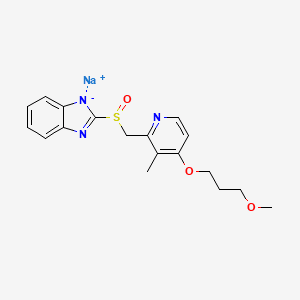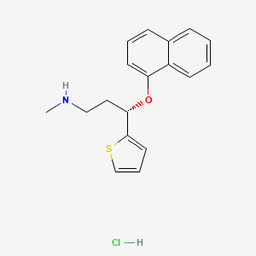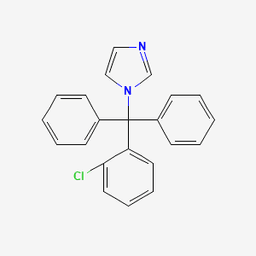

Rabeprazole Sodium or (Rabeprazole na) a proton pump inhibitor (PPI) that suppresses gastric acid secretion by inhibiting the H⁺/K⁺-ATPase enzyme system at the secretory surface of gastric parietal cells action that leads to a reduction in gastric acidity, providing relief from acid-related disorders. Rabeprazole treats gastroesophageal reflux disease (GERD), peptic ulcers, and Zollinger-Ellison syndrome. The compound exhibits hygroscopic properties to be specific. Rabeprazole sodium, also known as Rabeprazole sodium salt, is preferred by manufacturers in the pharmaceutical industry for the production of oral dosage forms, such as enteric-coated tablets and capsules, designed to treat acid-related gastrointestinal disorders. Rabeprazole Sodium is a Proton Pump Inhibitor (PPI); Acid-Suppressing Agent; Delayed-Release API for GI Disorders.



Rabeprazole Sodium or (Rabeprazole na) a proton pump inhibitor (PPI) that suppresses gastric acid secretion by inhibiting the H⁺/K⁺-ATPase enzyme system at the secretory surface of gastric parietal cells action that leads to a reduction in gastric acidity, providing relief from acid-related disorders. Rabeprazole treats gastroesophageal reflux disease (GERD), peptic ulcers, and Zollinger-Ellison syndrome. The compound exhibits hygroscopic properties to be specific. Rabeprazole sodium, also known as Rabeprazole sodium salt, is preferred by manufacturers in the pharmaceutical industry for the production of oral dosage forms, such as enteric-coated tablets and capsules, designed to treat acid-related gastrointestinal disorders. Rabeprazole Sodium is a Proton Pump Inhibitor (PPI); Acid-Suppressing Agent; Delayed-Release API for GI Disorders.

.3d8f8f41.svg)
Pharmaceutical
.3556d45a.svg)

Pharmaceutical Actives & Precursors


Active Pharmaceutical Ingredients (APIs)

Chemical Properties & Specifications
Acute Toxicity (Oral) Category 4; Hazardous to the aquatic environment, chronic hazard, Category 4
Warning
H302: Harmful if swallowed
H413: May cause long lasting harmful effects to aquatic life
P264: Wash hands thoroughly after handling
P270: Do not eat, drink, or smoke when using this product
P273: Avoid release to the environment
P301+P312: IF SWALLOWED: Call a POISON CENTER or doctor/physician if you feel unwell
P501: Dispose of contents/container in accordance with local/regional/national/international regulations
Used to alleviate symptoms and promote healing in patients with GERD by reducing gastric acid secretion.
Aids in the healing of duodenal and gastric ulcers by inhibiting acid production.
Employed as part of combination therapy to eliminate H. pylori, reducing the risk of ulcer recurrence.
Manages pathological hypersecretory conditions by suppressing excessive gastric acid production.
Commonly formulated in enteric-coated tablets to ensure stability and targeted release in the intestine.
Irreversibly binds to and inhibits the H⁺/K⁺-ATPase enzyme system, leading to prolonged suppression of gastric acid secretion.
Approximately 52% following oral administration.
Approximately 96.3%.
Extensively metabolized in the liver via CYP2C19 and CYP3A4 isoenzymes.
Approximately 1 hour.
Primarily excreted in urine as metabolites.
Pharmacopoeial Standards: Complies with USP, EP, and BP specifications.
Store at -20°C in a tightly sealed container, protected from light and moisture.
Available in various quantities suitable for pharmaceutical manufacturing needs.

CAS No. : 70356-09-1
Category : Pharmaceutical Actives & Precursors
Sub-Category : Intermediates & Precursors

CAS No. : 136434-34-9
Category : Pharmaceutical Actives & Precursors
Sub-Category : Active Pharmaceutical Ingredients (APIs)

CAS No. : 23593-75-1
Category : Pharmaceutical Actives & Precursors
Sub-Category : Active Pharmaceutical Ingredients (APIs)